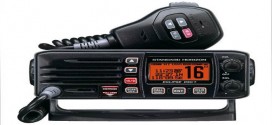To ensure a safe voyage and prevent problems before they arise it’s paramount that you check your sailboat or motorboat marine engine before leaving your mooring. This marine engine pre start checks checklist covers the minimum checks required and has been created for diesel engines.
Marine Engine Pre Start Checks
- Water: remove cap on water tank and feel inside for water/coolant. Top up with distilled water and antifreeze if necessary.
- Oil in sump: remove oil dip-stick and wipe clean. Re-insert and pull out to ensure that oil is at the correct level. Smell the oil – if there’s any hint of fuel in the oil, alter the captain immediately.
- Oil in gearbox: note that this might need to be done after the engine has been run for a few minutes and then shut down. Check your manual.
- Fuel supply control (if fitted): make sure that it’s in the open position
- Belt: check that the belt(s) around the engine are firm. Don’t twist! Should bounce the width of your thumb along the longest side (25 – 30mm)
- Battery: look at the batteries and ensure the connections are solid and there’s no serious corrosion. Check the charge level.
- Leaks: look around the area below the engine. Ensure there are no liquids such as water, oil or fuel in the bilge. Always keep the engine basin very clean so leaks show up easily.
- Electricity: make sure all the wires are secure and there are no lose ends.
- Strainers: check the sea strainer or strainers. Ensure they’re free from debris. Use gloves as some sea creatures are hard to see and can sting if you touch them.
- Seacocks: make sure that your engine seacocks are open.
- Fuel: check that you have adequate fuel for your travels.
- Log: enter your engine hours and review maintenance logs.
- Sniff: to ensure that no fuel fumes are detectable in the engine bay or bilge before firing up the engine.
To view all the CheckListables sailboat related checklists and more information on sailing, yachting, blue water cruising, circumnavigation, sailing destinations and much more, please visit: Sailing Britican Checklists
 We love Checklists Action. Check. Done.
We love Checklists Action. Check. Done.



Kim, I would add a safety check to your list. Since starting an engine in a boat involves applying electricity to a combustible fuel which causes an explosion to occur (hopefully inside the combustion chamber) I would add that before initiating that procedure it is prudent to ensure that there are no combustible fumes in the boat which could explode in the presence of a spark, and that there are no sparks for that matter.
Boats sometimes carry one or more combustible fuels such as Diesel, Gasoline/Petrol, Propane, Meths, carosene, or white gas/oil for lamps etc, and since boats are (unlike your garden shed) often unstable platforms that bounce around in a seaway, pound into waves, rock side to side and generally do things which can cause fuel lines, hoses, and fittings and covers or connectors which carry or contain these fuels to become loose and perhaps leak, I think it a prudent thing to check that there are no fuel fumes detectable in the engine bay, or bilge before firing up the engine.
There are Vapor detectors/alarms on the market, and fans you can switch on after fueling, to help evacuate vapors and reduce risk of explosion or fire at sea, but if one does not have such devices, the safety check should include routinely sticking your nose into the bilge, and engine compartment to check for fumes after fuelling, and before starting. A canary would be useful in this regard, and they are cheaper than electronic detectors to be sure but some may consider that too cruel.
Another lifesaving tip for people with engines aboard their boats is to install one or perhaps 2 Carbon Monoxide detectors so you and yours don’t accidentally wake up dead after breathing otherwise undetectable CO
and of course every boat with an engine should have at least one CO